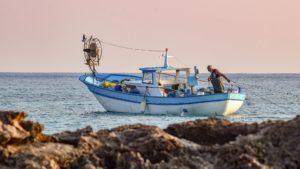For many years now, the European Union has been committed to preserving the seabed in France and in all its member countries. But, concretely, what are the different actions put in place by the European Union?
The Natura 2000 network
The Natura 2000 network is made up of a group of natural land and marine sites. Its objective is to ensure the long-term survival of highly threatened species and habitats through two criteria:
- The preservation of biological diversity and natural heritage.
- Taking into account economic, social and cultural requirements as well as regional particularities.
Natura 2000 is :
- 15% of the European Union terrestrial territory
- 6% European waters
- 572 special protection areas for birds (SPAs)
- 726 special areas of conservation for habitats and species (SAC)
The EMFF
The European Maritime and Fisheries Fund aims to support the following themes by providing EU members with a €27 billion fund (between 2014 and 2020):
- Support sustainable, innovative and competitive fishing
- Support sustainable, innovative and competitive aquaculture
- Improve employment and strengthen territorial cohesion
- Support the marketing and processing of fisheries and aquaculture products
This European fund intervenes in the framework of the Common Fisheries Policy and the Integrated Marine Policy. It is distributed among all the European members.
For example: over the period 2014-2020, France has benefited from a global envelope of 588 million euros from EMFF funding.
It allows France to intervene on different priorities such as :
- Improving employment and strengthening territorial cohesion
- Encouraging the implementation of the Integrated Marine Policy
- Encouraging the implementation of the Common Fisheries Policy
In France, the EMFF program is managed by the Directorate of Maritime Fisheries and Aquaculture (DMFA) of the Ministry of Agriculture, but part of it can be entrusted to the coastal regional councils.
The IMP
« The EU’s Integrated Maritime Policy (IMP) is a comprehensive approach to all EU policies relating to the sea.
It is based on the idea that by coordinating a wide range of interconnected activities related to oceans, seas and coasts, the EU can get more out of its maritime space while reducing the impact on the environment.
The IMP therefore aims to strengthen the « blue economy », encompassing all economic activities that rely on the sea. »
TACs and quotas
In marine fisheries, TACs and quotas represent the « quantity in catch weight that it is decided not to exceed[…] in order to ensure the sustainability of its exploitation ».
TACs and quotas enable the limitation of overfishing and its social, economic and environmental impacts.
They are revised and established annually by the European Union.
For example, in 2020, the Union has established a quota of 43,793 tones of herring for all EU members and 99,700 tones for mackerel.
Read more
To find out more about the different actions implemented by the European Union to preserve the seabed:
Natura 2000:
Réseau européen Natura 2000 | Ministère de la Transition écologique (ecologie.gouv.fr)
Accueil | Natura 2000
EMFF:
Qu’est-ce que le FEAMP ? | Ministère de l’Agriculture et de l’Alimentation
TACs and quotas:
Les ministres de la pêche de l’UE adoptent des quotas de pêche provisoires pour la mer du Nord et l’Atlantique pour l’année 2021 – EU2020 – FR
Quotas de pêche : comment sont-ils fixés ? | Ministère de l’Agriculture et de l’Alimentation

